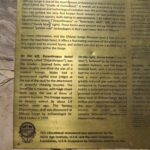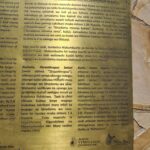OLDUVAI GORGE
About This Adventure
In the chronicles of Omuya Lukeman's explorations, a chapter emerged that transcended the vibrant landscapes and majestic wildlife. His journey took a profound turn as he set foot in the hallowed grounds of Olduvai Gorge, a place that whispered ancient tales of our shared ancestry—a narrative of two species, evolution and the unfolding drama of human history.
Olduvai Gorge, hailed as the cradle of humankind, stands as one of Earth's most revered archaeological sites. Its rocky expanse, etched by the ravages of time, unveiled a rich tapestry of human biological and technological evolution spanning over two million years. Lukeman, the valiant geologist, found himself in a living museum where stones and fossils spoke volumes about the journey of our species.
As Omuya explored the layers of sediment and stone that bore witness to eons past, he followed the footsteps of our ancestors. The Olduvai Gorge revealed an archaeological marvel—an outstanding record of tools, artefacts and fossilised remains that painted a vivid picture of the milestones in human evolution. Each layer held a story, a testament to the ingenuity and adaptability that shaped our species through millennia.
In the shadow of the Ngorongoro Highlands, Lukeman contemplated the significance of the Homo habilis tools discovered at Olduvai Gorge—a landmark moment marking the transition from primal simplicity to the dawn of technology. The ancient tools, meticulously crafted for survival, stood as silent witnesses to the gradual emergence of human intelligence and innovation.
The layers of Olduvai Gorge echoed not only with tangible artefacts but also with the ghostly whispers of the Homo erectus, Homo habilis, and other ancient hominins who once roamed these lands. It was a journey through time, where Lukeman, guided by archaeologists, connected with the essence of our shared past.
His visit to Olduvai Gorge was not merely an archaeological expedition; it was a pilgrimage to the roots of humanity. Omuya stood at the crossroads of time, contemplating the vast expanse of human evolution that unfolded in this theatre. The sagas of survival, adaptation, and progress were etched in the layers of sediment, awaiting discovery by those who sought to unravel the mysteries of our origin.
As the sun dipped below the horizon, casting an amber glow over the ancient gorge, Lukeman found himself humbled by the enormity of the story Olduvai told. The cradle of humankind had offered him a glimpse into the intricate dance of life and evolution that played out on this ancient stage.
In the pages of Lukeman's odyssey, Olduvai Gorge unfolded as a sacred chapter—a tale of two species, of Homo habilis crafting tools amidst the windswept rocks and the modern Homo sapiens standing as witnesses to their ancient legacy. His journey through this archaeological treasure trove became a testament to the enduring spirit of inquiry that defines our shared humanity.






